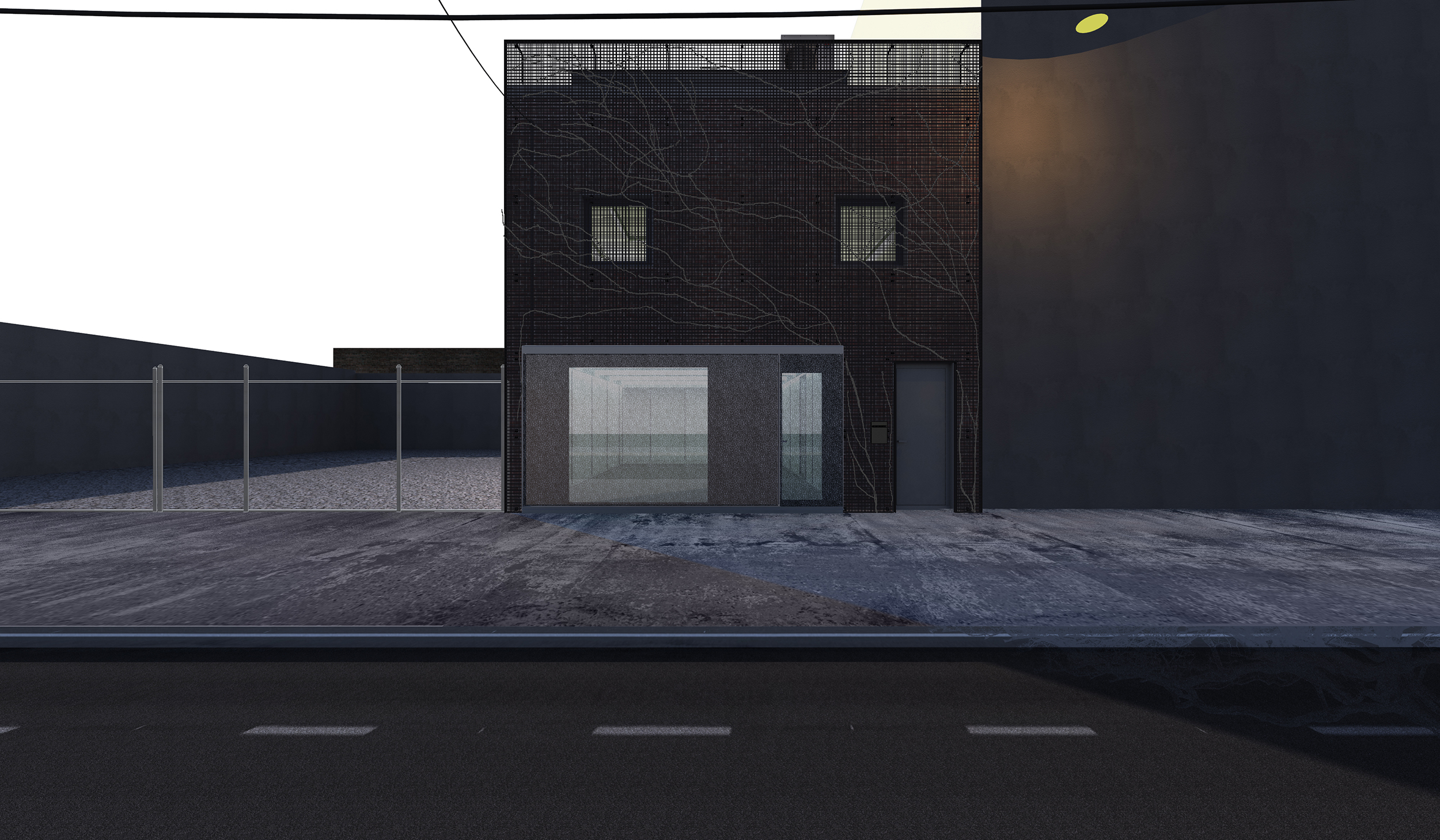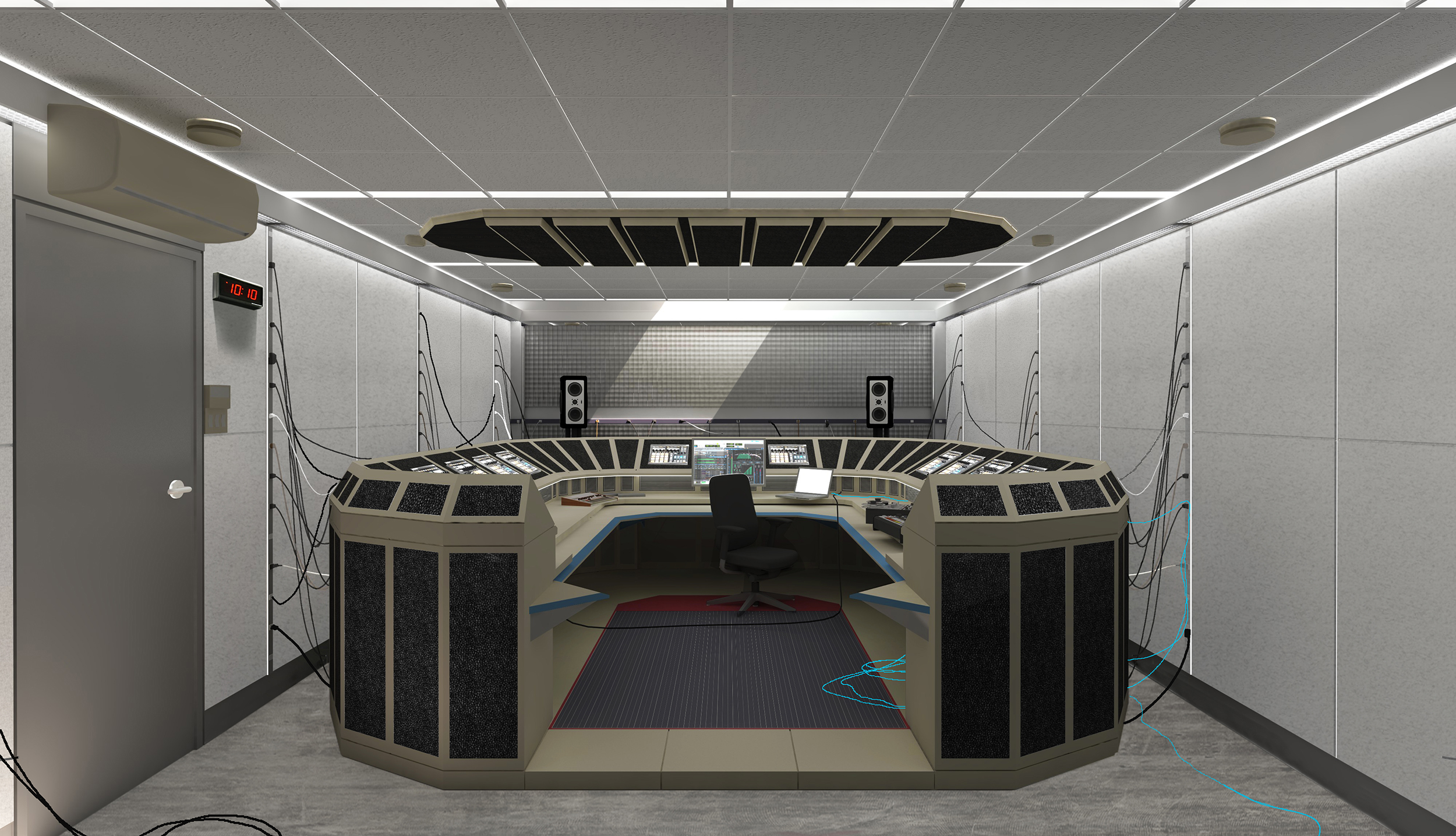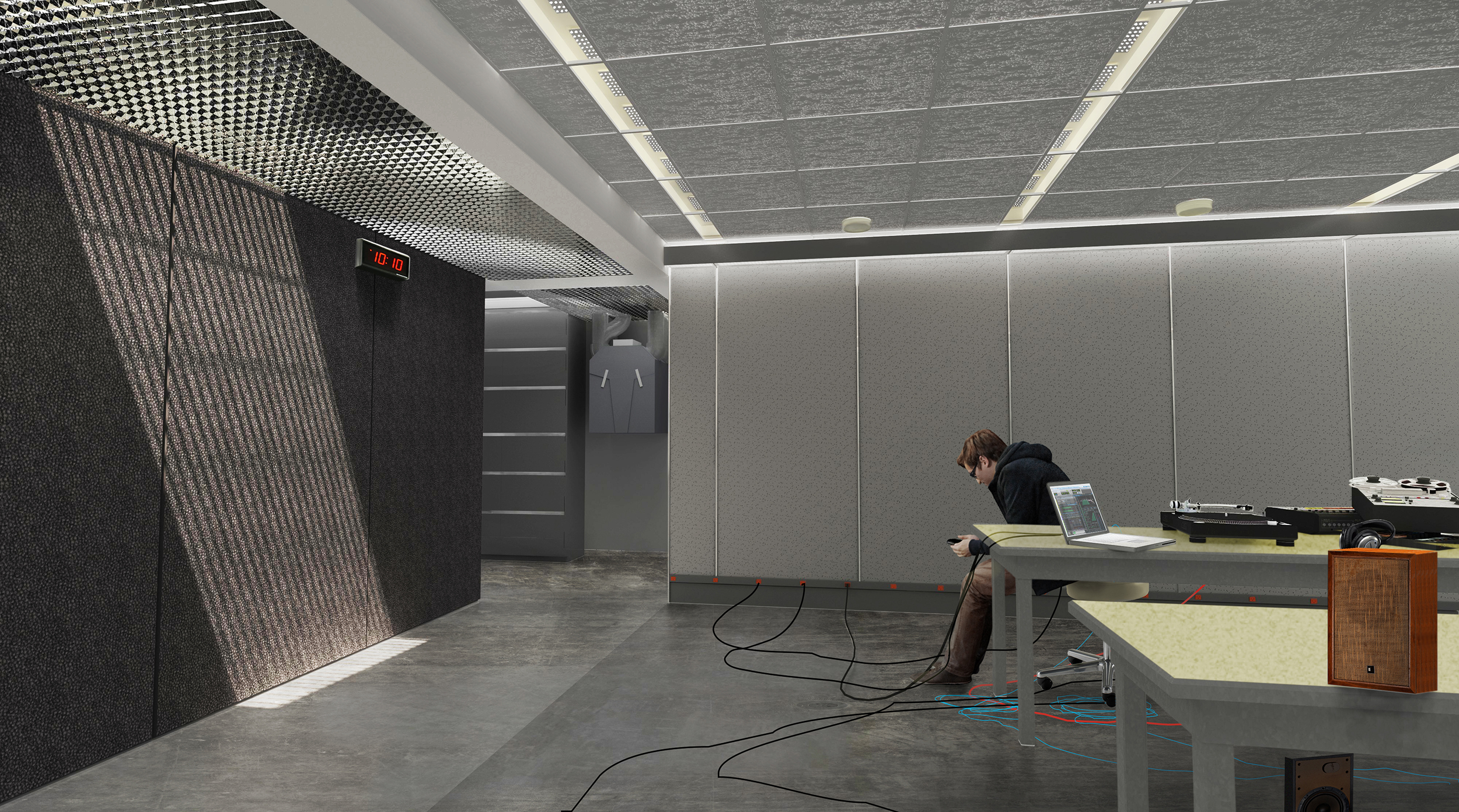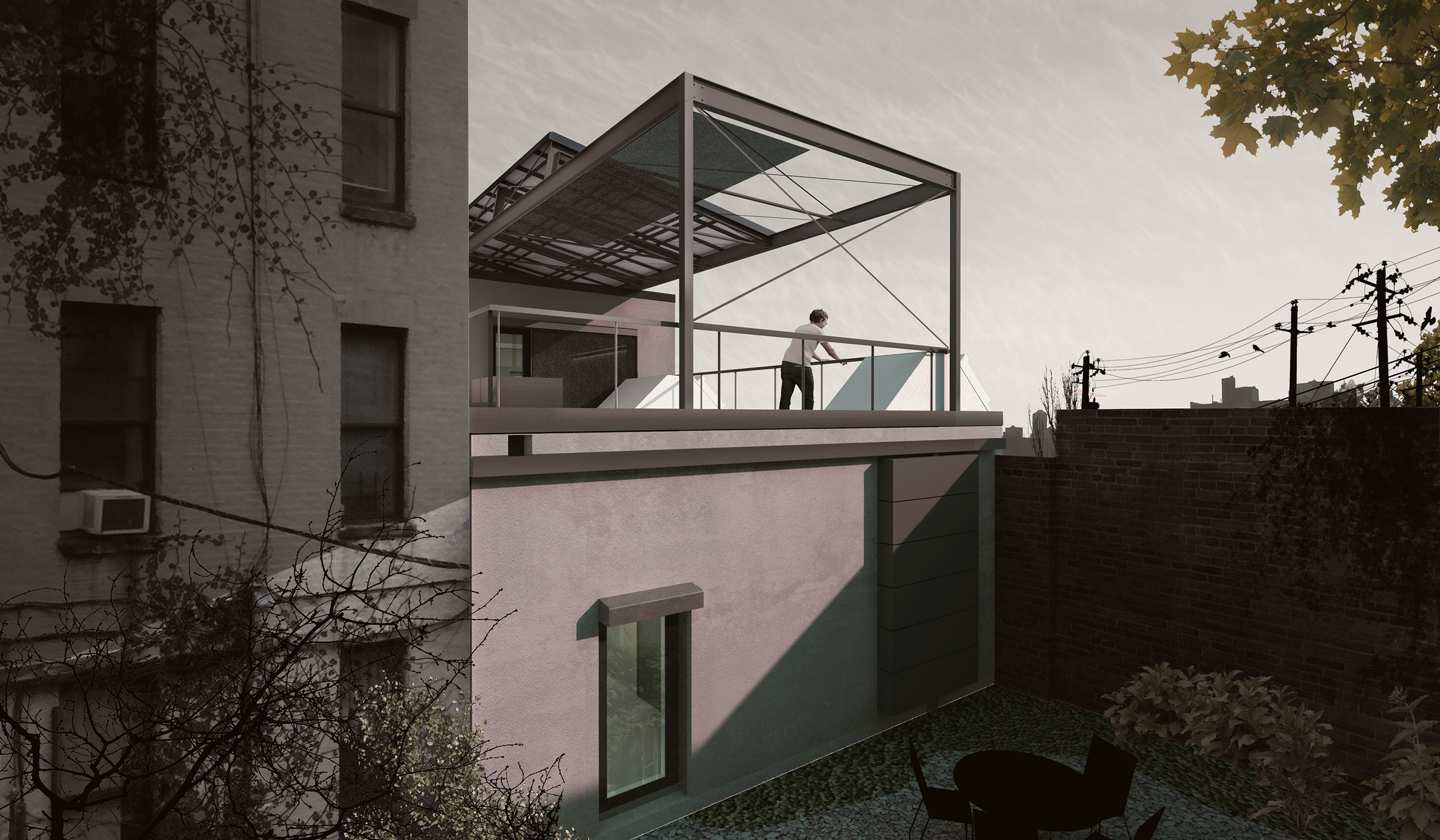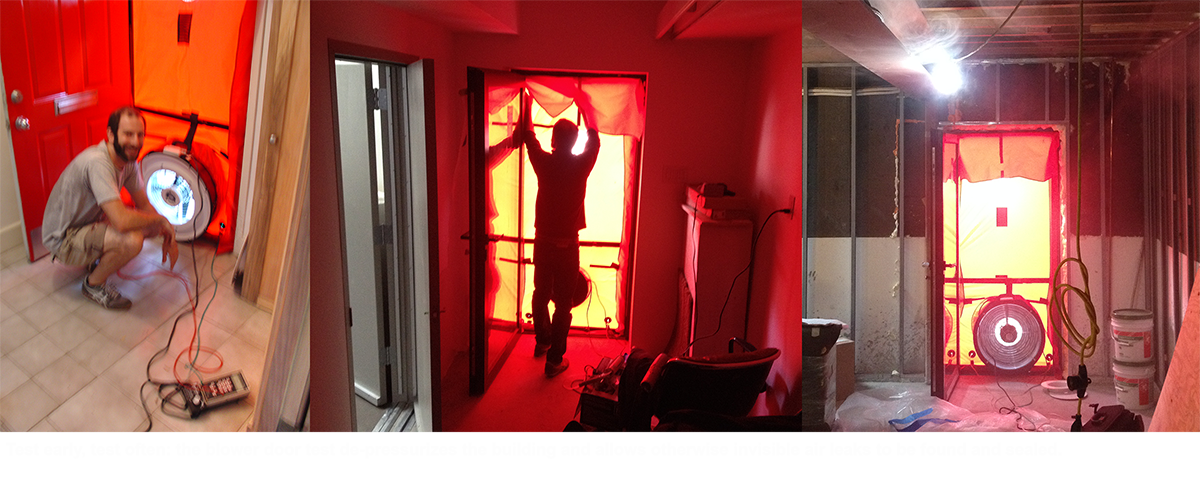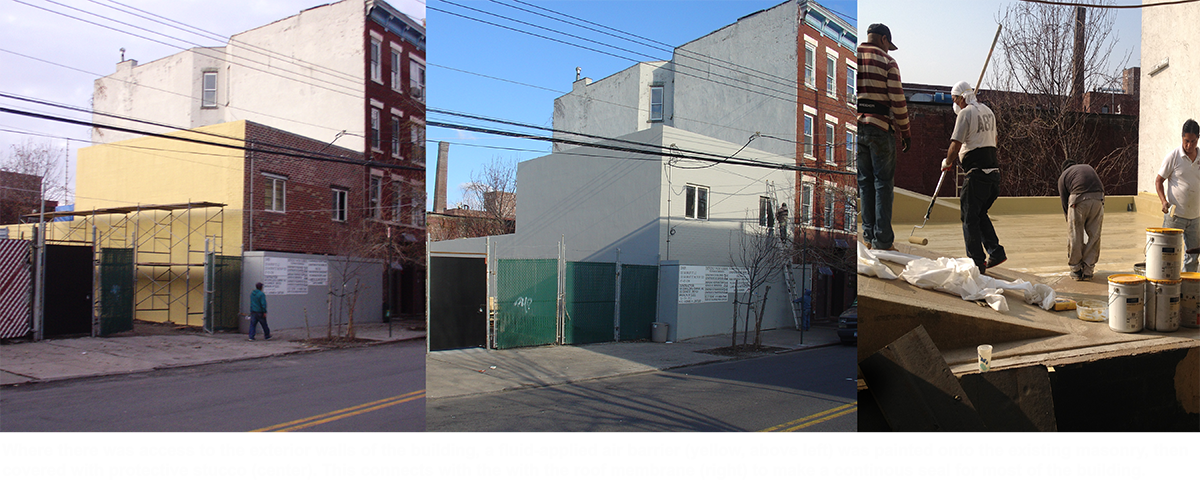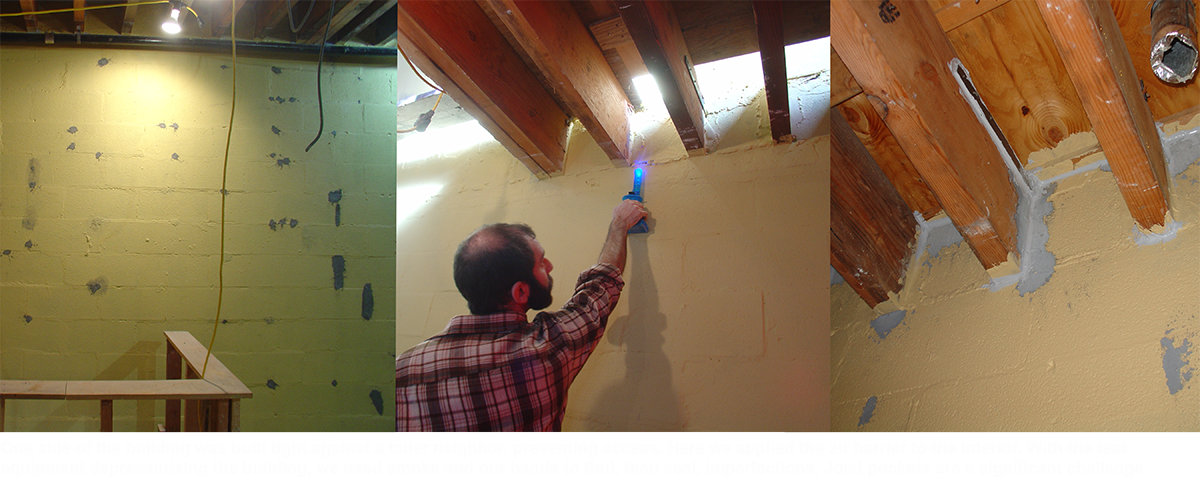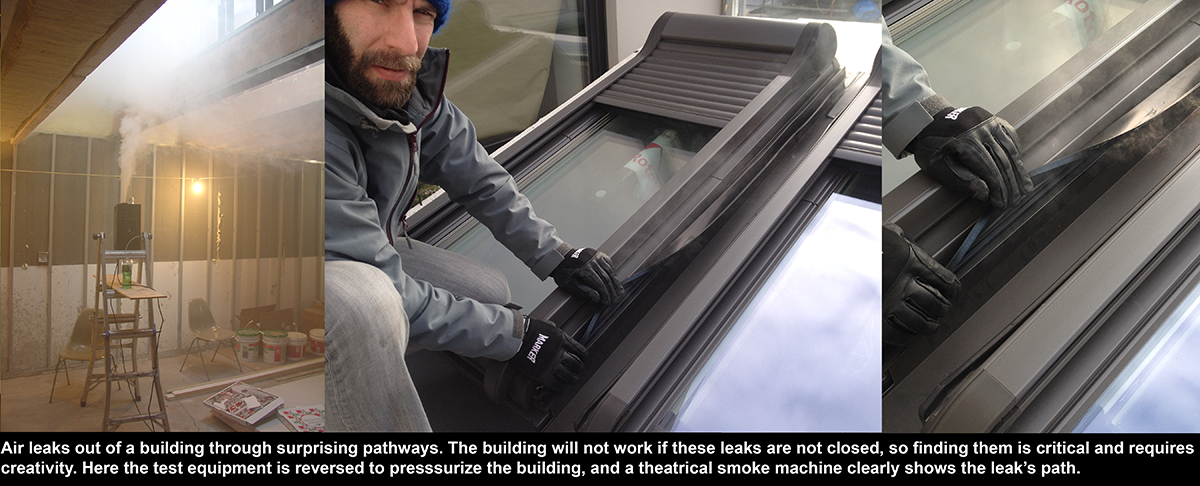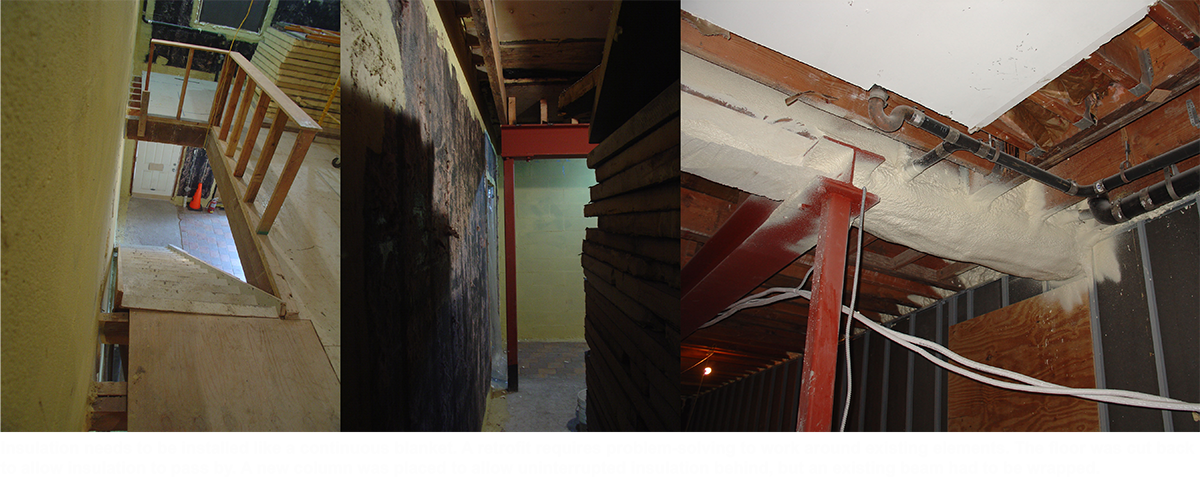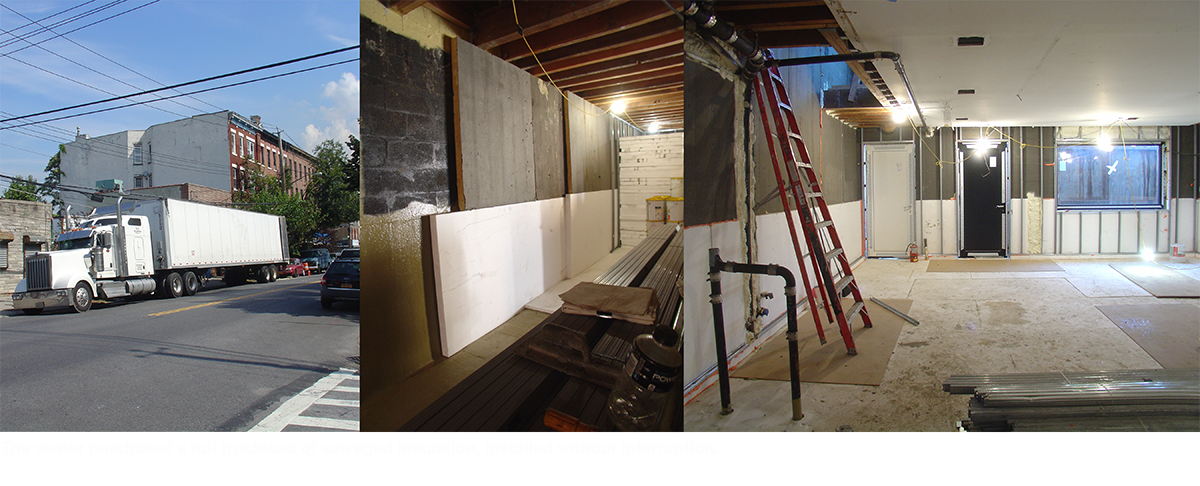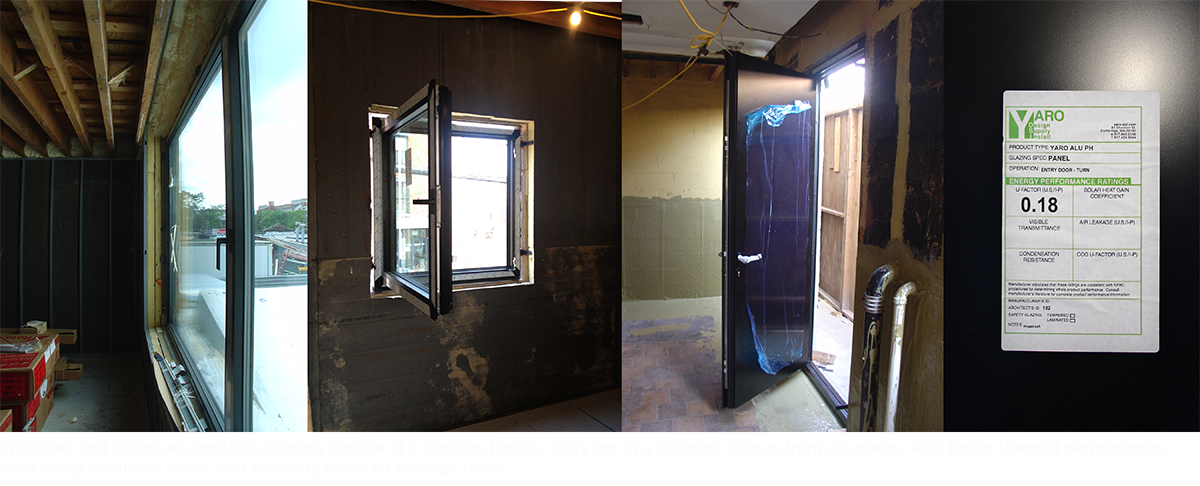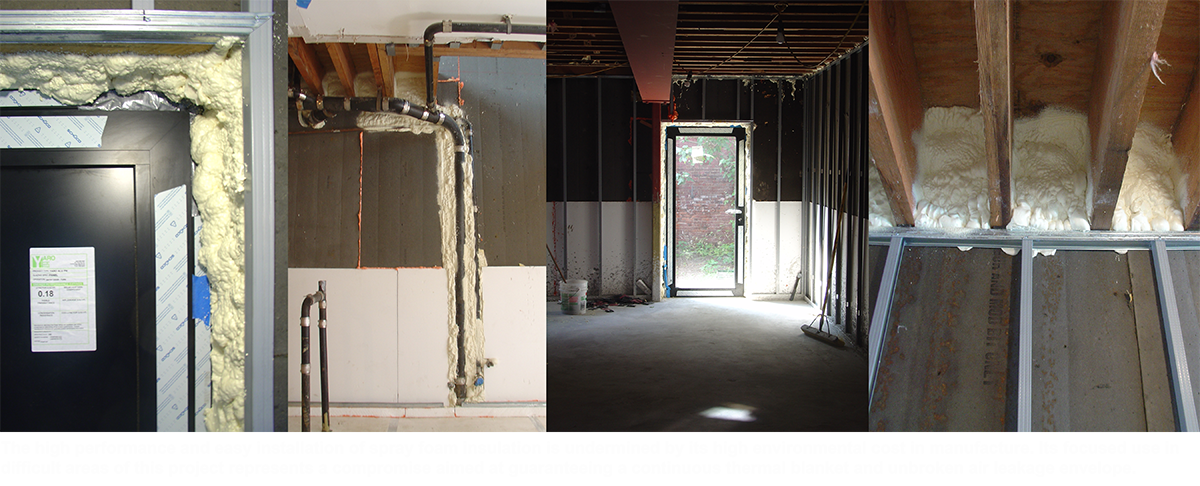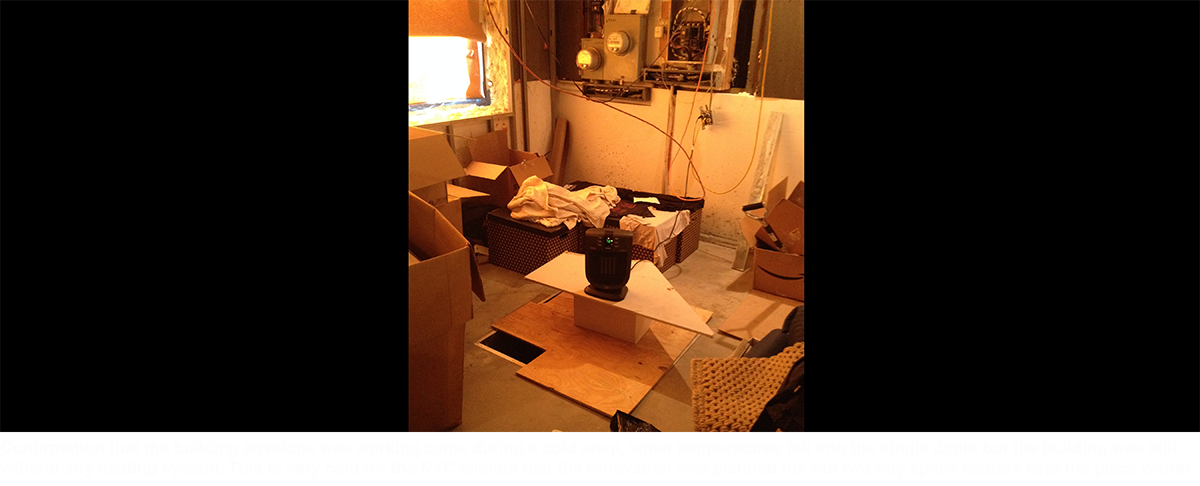Passive House Sound Studio
Located in Red Hook, Brooklyn’s notorious decayed port, this modest renovation is to be the first mixed-use building in NYC to meet the most rigorous low-energy construction certification in the world – the Passive House Certification from the PHI in Darmstadt, Germany. Despite the significant constraints of working with an existing structure built tight into NYC’s dense fabric, when complete this building will use use 90% less energy than a new building built to code.
This accomplishment is the result of unusually rigorous attention to the construction of the building’s envelope – its top, bottom, and sides – utilizing knowledge tracing back to work initially done by North American architects in the post-oil-embargo 1970’s, developed and codified in the 1990’s by German physicist Dr. Wolfgang Feist and Swedish professor Bo Adamson. If the investment in the envelope is systematic, careful, and of a sufficient level, a significant savings in heating and cooling equipment is possible, offsetting much of the cost of the envelope work. For this project, the building’s energy use will be reduced enough to be met entirety by a rooftop solar array, making the project “net-zero” within only the limited space of the building’s own footprint. It will be quiet and comfortable, with fresh air year round, and will cost the owner almost nothing to use.
It is fitting that this forward-looking, high-performance, all-electric building will house a sound studio dedicated to electronic music and digital sound art. In both function and expression, the architecture of this building will be part of the most modern expression of perhaps the oldest human act. Today, when even acoustic instruments are rarely heard without electronic reproduction, the work made here will have a voice whether or not the rest of the world has power. Through this building, it will literally be made from the sun.
More about Passive House:
As noted above, performance of the building envelope is central to the Passive House construction method. The envelope includes any part of the building that separates interior heated or cooled space from the outside, typically including the walls, floors, foundations, and roof. Together, the way these elements are built is transformed to trap heat (or cool) far more effectively than conventional construction. It is akin to the difference between a paper coffee cup and a thermos.
Happily, and indicative of the lack of attention paid to building envelope energy technology over the last hundred-plus years, this is surprisingly easy to achieve. Much of what is required comes down to attention to detail and a change of construction habit, particularly in two critical areas: installation of the insulation and creation of an air barrier. Insulation must be installed without any of the innumerable usual interruptions for wall framing, structural elements, clips, hangers, etc, and it must wrap without break around all six sides of the building, foundations included. Air barriers are often completely missing from the expertise of construction professionals – builders and architects alike. Construction of an air barrier is the least understood aspect of a Passive House, and the least appreciated element of building envelope thermal efficiency. The heated air that leaks out of a building has to be replaced. Doing so makes up as much or more of the demand for heating or cooling as the energy that is conductively passed through walls. But again, fortunately, it is not especially difficult to stop – it must only be taken seriously. Air leakage is eliminated by rigorously joining appropriate layers of exterior assemblies together to make a specific enclosure that is, again, absolutely complete around all six sides.
Industry standard treats these cursorily at best. Typical sloppiness or complete omission are concealed behind finish materials, and the heating system is made large enough to make sure nobody notices. Passive House reverses this priority. In a Passive House, execution of these elements cannot be shortcut, or the building will not function. Alignment of project goals, collaboration, and care amongst all involved are required. Frequent testing and in-the-field validation during construction confirm performance and allow correction of imperfections before they are entombed behind expensive subsequent finishes.
This work is frequently the most unusual aspect of the method, but is hidden when finished. Below are photographs taken during construction of how it was accomplished for this project.
